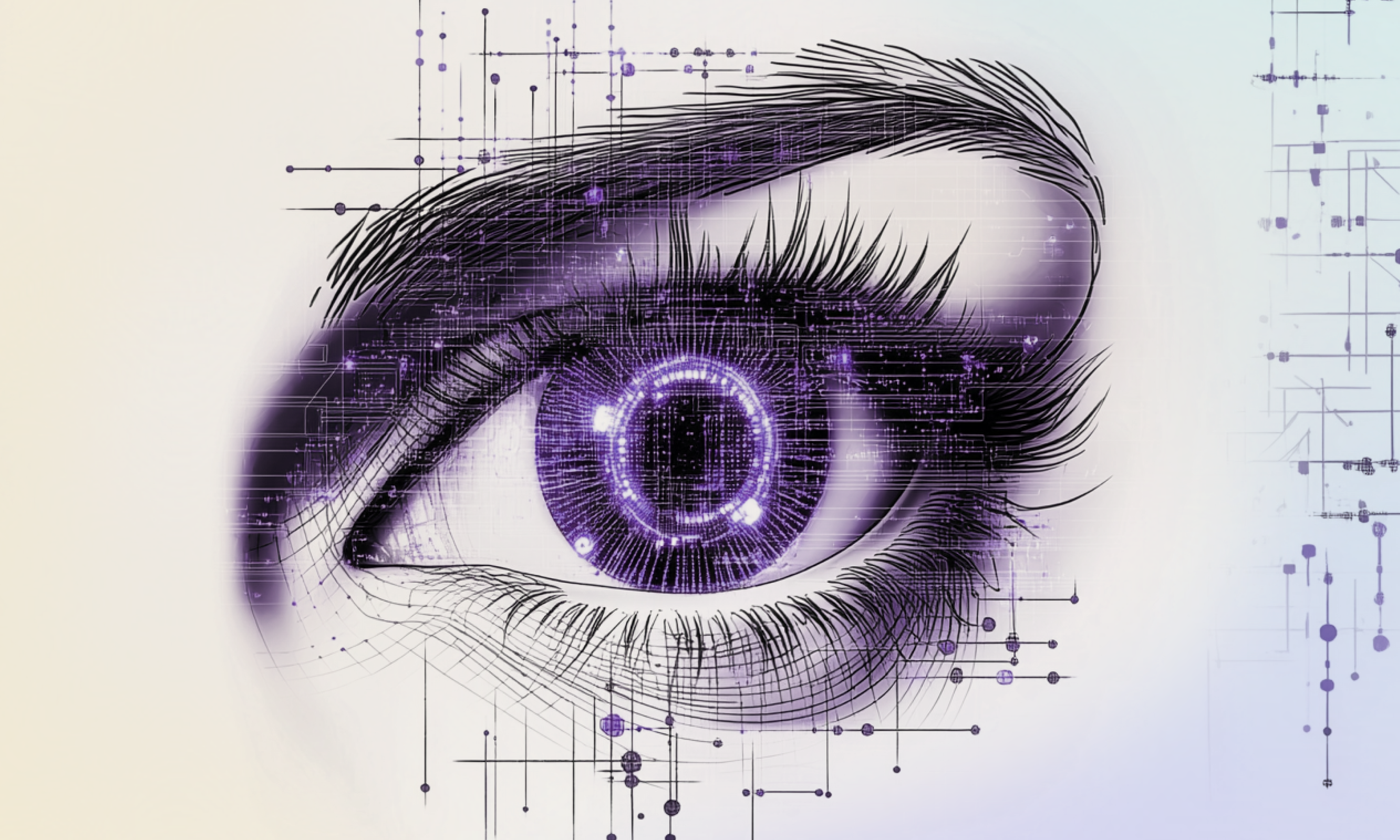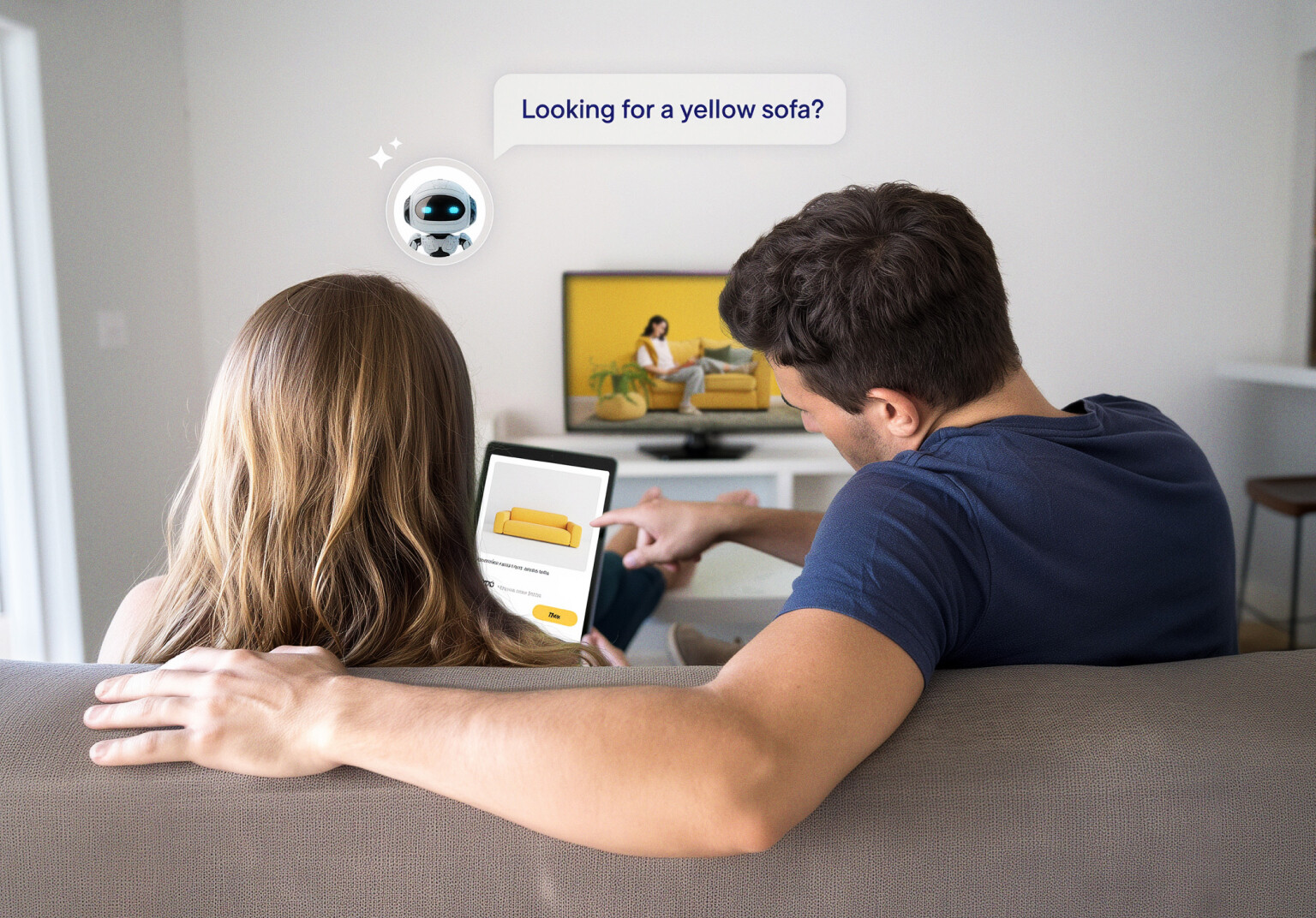
As digital commerce evolves, one technology quietly reshaping the retail industry is computer vision. While it may sound like something out of a sci-fi movie, computer vision is very much here and making waves across various industries — particularly retail.

The retail commerce industry moves so fast that keeping up feels like chasing a moving target. Trends and technologies that once seemed obscure can suddenly explode onto the scene, reshaping the entire market. Take computer vision. Just two years ago, it was barely on anyone’s radar — now it’s booming. According to Statista, the market size is projected to reach $29.27 billion USD in 2025 and show an annual growth rate of 9.92%, resulting in a market volume of $46.96 billion USD by 2030.
With numbers like these, it's no wonder retailers are racing to adopt this technology to tackle common challenges like inventory management, loss prevention and customer behavior analysis. In this blog, we’ll break down what computer vision is, explore real-world applications in retail and look at how it's changing everything from shelf management to checkout processes.
What is computer vision?
In simple terms, computer vision is a subset of artificial intelligence (AI) that enables machines to interpret and make decisions based on visual data — like images and videos. It mimics human vision, allowing computers to “see” and analyze visual content to detect patterns, identify objects and provide actionable insights.
From self-driving cars to augmented reality filters on social media, computer vision is behind countless innovations. And in retail, it’s redefining how stores operate, engage with customers and manage products.
Computer vision applications in retail
Computer vision is being adopted at an impressive pace by retailers looking to optimize operations and improve the shopping experience. Let’s dive into some notable applications and examples:
Keeping shelves stocked with the right products is critical for any retailer. Computer vision systems can monitor shelves in real time, analyzing which products are low and predicting when restocking is needed. This reduces out-of-stock situations and ensures better inventory control.
Walmart uses AI-powered computer vision in some stores to track inventory levels and reduce manual shelf-scanning tasks, resulting in improved operational efficiency.
Understanding customer behavior is key to optimizing store layouts. Computer vision creates heat maps that visualize high-traffic areas, helping retailers identify where shoppers spend the most time.
H&M has experimented with computer vision technology to gain insights into customer traffic patterns, allowing for smarter merchandising strategies.
Thanks to image recognition and AI, cashierless stores are becoming a reality. Shoppers can walk in, pick up what they need and leave — no checkout lines required.
Amazon Go stores rely on computer vision to track what customers take from shelves and automatically charge them when they exit.
Image recognition allows retailers to identify products visually, making it easier to track stock or speed up checkout.
Ulta Beauty has implemented image recognition tools in its app to let users virtually try on makeup before making a purchase.
A planogram is a visual plan that outlines the placement of products on store shelves. Computer vision can analyze whether products are correctly positioned according to these guidelines.
Coca-Cola uses computer vision to ensure its displays match pre-approved layouts, optimizing brand visibility and sales.
Theft and fraud are perennial challenges for retailers. With computer vision, stores can monitor suspicious activity and detect theft in real time, reducing losses.
Lowe’s has trialed AI-based loss prevention systems that use computer vision to detect unusual patterns of behavior associated with shoplifting.
Crowd analysis helps retailers manage foot traffic and avoid overcrowding, which is especially important for safety during sales events or peak hours.
Some large malls and department stores in China use computer vision to monitor crowd density and manage customer flow.
Beyond loss prevention, computer vision enhances security by detecting potential threats or monitoring restricted areas.
Many high-end retailers, such as Neiman Marcus and Nordstrom, use advanced camera systems powered by computer vision to detect unauthorized access to sensitive areas.
Disadvantages of computer vision
While the benefits of computer vision are compelling, there are several hurdles retailers must navigate when implementing this advanced technology:
High costs: Deploying computer vision systems involves significant upfront investments in hardware, software and integration. Specialized cameras, edge computing devices and AI processing units can drive up costs. Additionally, ongoing maintenance, upgrades and operational expenses can strain budgets, especially for small and mid-sized retailers.
Data privacy concerns: Computer vision often requires the collection and processing of massive amounts of visual data, raising potential privacy issues. Retailers must ensure compliance with stringent data protection laws like the General Data Protection Regulation (GDPR) and the California Consumer Privacy Act (CCPA). Transparent communication with customers about how their data is being used is essential to maintain trust.
Errors and bias: Despite advancements in AI, computer vision systems are not foolproof. Misidentifications can occur — for example, incorrectly flagging a customer as a potential shoplifter or misclassifying products. Furthermore, biases embedded in training datasets can lead to skewed results, potentially harming the customer experience.
Retailers adopting computer vision need to weigh these challenges carefully and develop robust strategies to mitigate them. Partnering with experienced technology providers and maintaining a strong focus on ethical AI practices are key steps toward successful implementation.
The future of computer vision in retail
The potential of computer vision in retail is vast and as the technology continues to evolve, we can expect even more sophisticated and impactful applications. Let’s explore some future possibilities:
Personalized shopping experiences: By analyzing customer behaviors in real-time, computer vision could enable hyper-personalized promotions and product recommendations. Imagine a system that instantly identifies a returning customer and suggests products based on their past purchases or preferences.
Enhanced omnichannel experiences: The lines between online and offline retail are blurring. Computer vision can bridge this gap by creating seamless customer journeys. For instance, a customer could use an app to locate a product in-store and computer vision could guide them directly to it.
Sustainable retail practices: Efficient inventory management enabled by computer vision can significantly reduce waste. By accurately predicting stock requirements and monitoring expiration dates, retailers can adopt more sustainable practices, aligning with consumer demand for eco-conscious shopping.
Automated store operations: Future stores may rely heavily on automation powered by computer vision. From robotic restocking systems to fully autonomous stores that require minimal human intervention, the possibilities are extensive.
Advanced security and loss prevention: As AI becomes more sophisticated, computer vision will be better equipped to detect subtle patterns of fraudulent activity or identify potential security threats before they escalate.
Crowd management and safety enhancements: In addition to optimizing store layouts, computer vision can be used to monitor crowd density in real time, helping retailers ensure safe and comfortable shopping environments, particularly during high-traffic periods.
Retailers that embrace these advancements are positioning themselves not just to survive but to thrive in an increasingly competitive and dynamic market. As consumer expectations continue to rise, computer vision will be a critical tool for delivering exceptional shopping experiences, optimizing operations and promoting innovation.
Looking ahead
Computer vision is not just reshaping retail — it’s redefining what's possible. From streamlining operations to crafting tailored customer experiences, this technology empowers retailers to move beyond traditional boundaries. As the market continues to grow and evolve, those who harness the potential of computer vision today will lead the charge toward a smarter, more agile retail future. The question isn’t whether retailers should adopt it — it’s how far they’re willing to take it.
